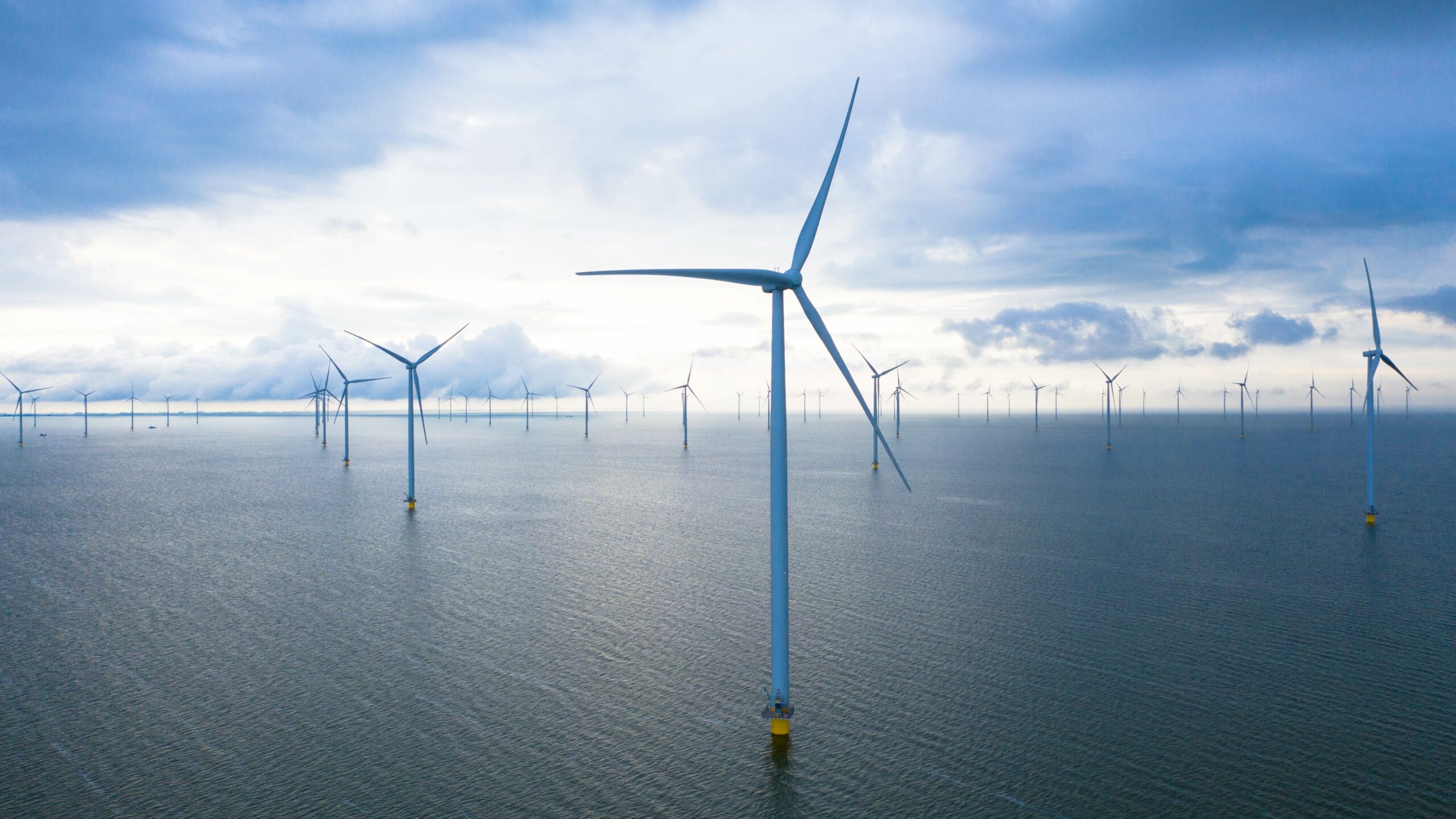
Wind Institute Fellows accelerate the future of offshore wind, in New Jersey and beyond
After a successful first year, the Andlinger Center for Energy and the Environment has selected four graduate students to participate in the second Princeton cohort of the Wind Institute Fellowship Program.
In collaboration with Princeton faculty, the fellows will carry out research projects that will inform the future of the offshore wind industry, from understanding how to better align project developers and local communities on new projects to unlocking insights into the performance and longevity of turbines under diverse operating conditions.
The Wind Institute Fellowship Program, established by the New Jersey Economic Development Authority (NJEDA), supports students at select New Jersey institutions of higher learning with the goal of advancing knowledge and expertise around the offshore wind industry in New Jersey and the surrounding region. Princeton University joined the Wind Institute Fellowship Program in 2023.
The fellows will conduct independent research projects during the 2024-2025 academic year, as well as the following summer. In addition to their projects, the students will meet regularly with a New Jersey-wide cohort of fellows to deepen their understanding of offshore wind, engage with a range of experts in the wind industry, and share their findings at an Offshore Wind Energy Symposium in spring 2025.
2024-2025 Wind Institute Fellows:

Clara Martín Blanco
Impact of waves on offshore wind farms: Direct numerical simulations of broadband waves forced by turbulent wind
In an offshore wind farm, the wind coming from the shore, the waves coming from the ocean, and the wake produced by the turbines themselves all interact to influence the structure of the atmospheric boundary layer, the thin region of air near the turbine blade that impacts the system’s performance. However, these wind-wave-wake interactions often occur out of equilibrium — a typical configuration on the northeastern coastline features ocean swells from far-off Atlantic storms interacting with wind from the nearby shore. Clara Martín Blanco, a graduate student in mechanical and aerospace engineering, will work with adviser Luc Deike, associate professor of mechanical and aerospace engineering and the High Meadows Environmental Institute, to simulate the complex interactions between wind and waves with the goal of informing optimal wind farm designs. By understanding how the misalignment of wind and ocean waves impacts turbine operations, Martín Blanco’s research could also foster new techniques to enhance the efficiency and reliability of offshore wind energy generation.
“The fellowship provides a unique opportunity to collaborate with industry and academic leaders, enhancing wave interactions with wind turbines and reducing environmental impacts,” wrote Martín Blanco. “With a solid theoretical base and practical experience, I am ready to tackle the challenges of offshore wind energy and contribute significantly to its future.”

Simon Ji
Low-cost energy storage solutions to enable widespread implementation of wind energy
While costs for wind energy projects continue to decline, their intermittent electricity generation still poses significant stability and reliability challenges for the power grid. Simon Ji, advised by Kelsey Hatzell, associate professor of mechanical and aerospace engineering and the Andlinger Center for Energy and the Environment, will study aqueous zinc-based battery systems and their applications for grid-scale energy storage, focusing on how intermittent energy sources like wind influence their degradation. These zinc-based batteries benefit from low cost, material abundance, high theoretical capacity, and safety, yet few studies have explored their performance and longevity under realistic operating conditions. By studying these battery systems in dynamic settings, Ji, a graduate student in mechanical and aerospace engineering, aims to learn more about what causes them to degrade, paving the way for efforts to develop materials for the energy transition.
“Despite recent advancements in grid storage batteries, they still lack the cost-effectiveness, capacity, and reliability to be a commonly used solution,” wrote Ji. “My project aims to subject these batteries to real-world conditions, evaluating their longevity and reliability under varying temperature and cycling conditions — crucial concerns for grid designers.”

Victoria Malarczyk
Investigating the aerodynamic performance of offshore wind turbine airfoils in New Jersey
The maintenance and longevity of wind turbines can significantly influence the commercial viability of new offshore wind projects, yet understanding how a turbine blade will respond over time to a variety of weather and ocean conditions can be difficult due to their large size — the blades of GE Vernova’s Haliade-X turbines are each over 350 feet long. Victoria Malarczyk, a graduate student in mechanical and aerospace engineering, will collaborate with adviser Marcus Hultmark, professor of mechanical and aerospace engineering, to leverage a unique high-pressure wind tunnel facility located on Princeton’s Forrestal Campus to experimentally re-create the operating conditions of full-scale wind turbines. The experiments will provide unprecedented insight into the aerodynamic properties of turbine blades at flow regimes that emulate those of the New Jersey coastline. Such insight could be used to develop models that inform the design of next-generation wind turbines that are more resilient to the rugged and variable conditions experienced at offshore wind farms.
“Studying wind energy pairs well with my natural curiosity about the world and my personal mission to help make better use of its resources,” Malarczyk wrote. “[Through this fellowship], I look forward to being able to integrate knowledge from offsite trainings, site visits, and meetings with key stakeholders and policymakers that will help enrich my understanding of the needs of the industry.”

Hannah Hata Williams
The messy business of “clean” energy: Examining the role of coloniality in offshore wind discourse
Hannah Hata Williams, a graduate student in mechanical and aerospace engineering, will be participating for the second time in the Wind Institute Fellowship Program. In her first year of the program, Williams worked to develop computational fluid dynamics simulations of full-scale offshore wind farms, using them to answer questions about offshore wind energy siting, operations, and production. In her second year, Williams will explore the potential disconnect between the intent and impact of renewable energy technologies like offshore wind. In collaboration with Jerry Zee, assistant professor of anthropology and the High Meadows Environmental Institute, Williams will leverage approaches from the humanities and social sciences to better understand the outcomes of clean energy deployment in local communities. The goal, she said, is to learn ways for engineers to explicitly incorporate environmental equity into the research and development of new technologies, ensuring that the clean energy transition is aligned with environmental justice goals.
“The project of building out renewable energy to replace fossil fuels while [our] dependence on electricity exponentially increases is full of opposing forces,” wrote Williams. “‘Clean’ energy sources must replace a fundamentally extractive and exploitative industry without repeating the same mistakes.”